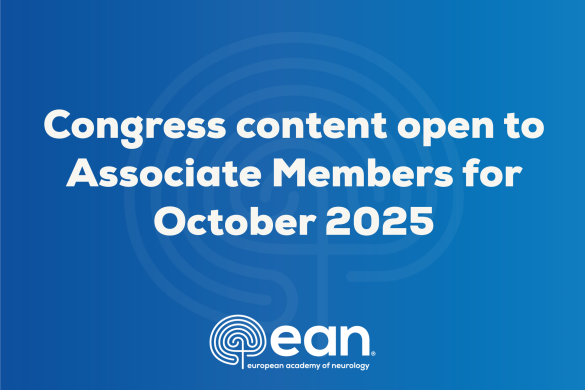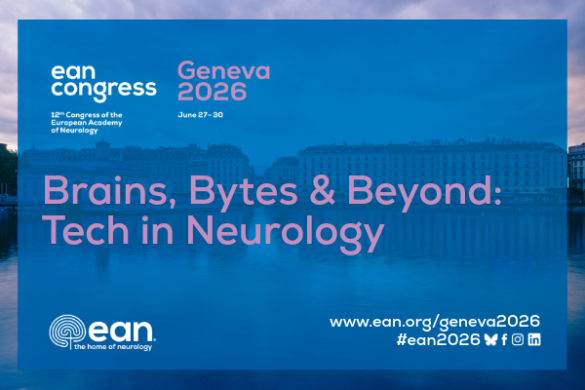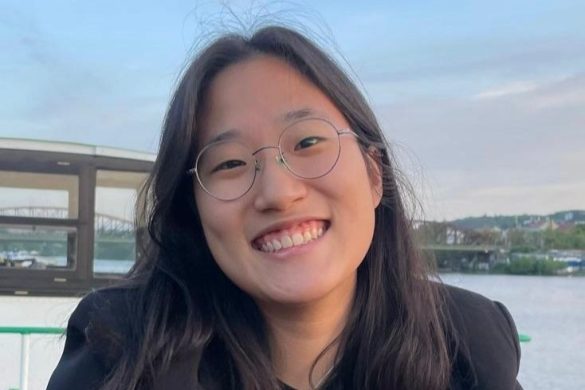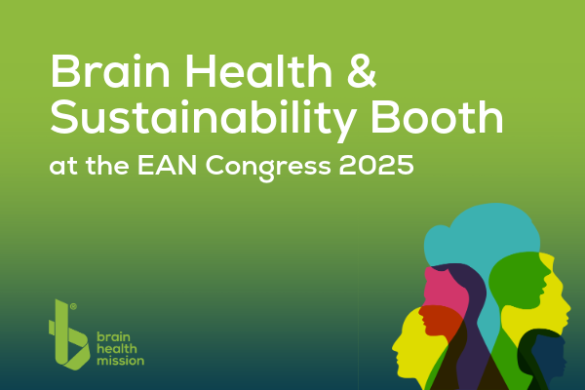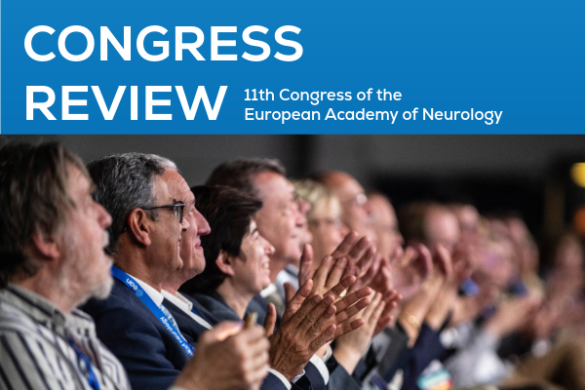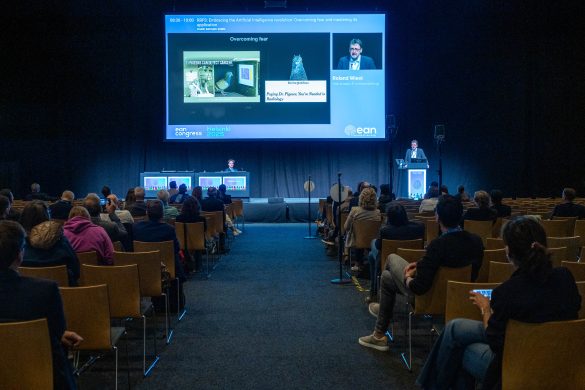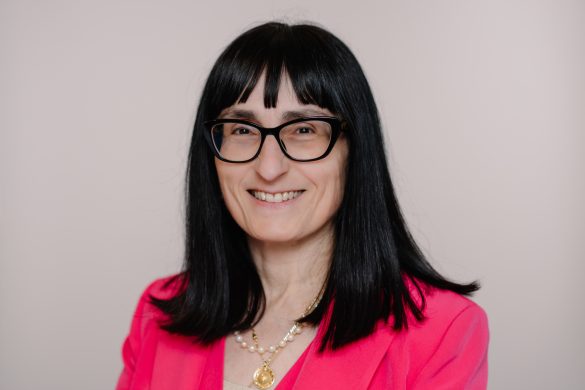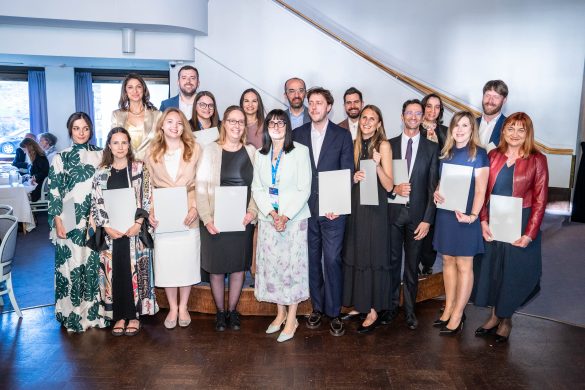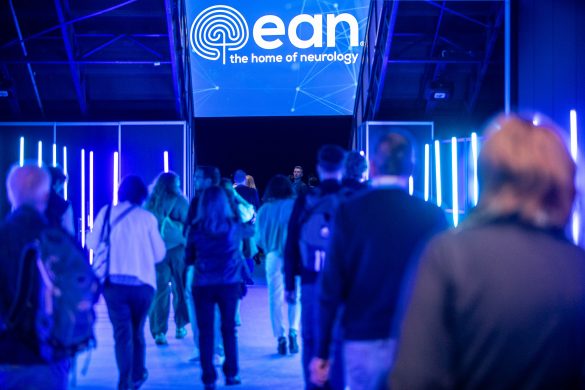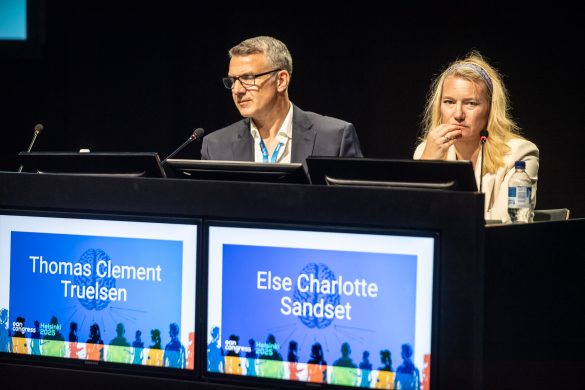by Irina Vlad
The second part of the ‘Breakthroughs in Neurology’ series at the EAN Congress 2025 continued to build momentum from the previous day, showcasing six high-impact presentations that bridged scientific innovation and real-world clinical potential. Chaired with precision, grace, and warmth by Prof. Cristian Falup-Pecurariu, the session offered a vivid look into the present and future of neurology—highlighting treatments that are not only breaking scientific ground, but redefining care pathways.
Matilde Bruno – Lecanemab and the Future of Anti-Amyloid Treatments
Matilde Bruno (L’Aquila, Italy) opened the session with a forward-looking presentation on lecanemab, now approved as the first disease-modifying therapy for early Alzheimer’s disease. Her talk underscored the significance of this milestone—achieved after decades of challenging amyloid-targeted research. With statistically solid trial data confirming slowed cognitive decline, Bruno also explored the deeper implications of introducing such a therapy into daily practice. Lecanemab shines a light on the fragilities of our current systems, from uneven diagnostic pathways to the need for infrastructure that can support infusion therapies and monitor safety. The cost and access hurdles raise important ethical questions, but as Bruno emphasised, this approval marks the beginning of a new era—one that challenges healthcare systems to adapt and evolve alongside therapeutic innovation.
Eugen Trinka – REST: A Paradigm for Seizure Emergencies
Eugen Trinka (Salzburg, Austria) presented compelling data on intranasal seletracetam in reading epilepsy, introducing the broader concept of REST—Rapid and Early Seizure Termination. REST is a novel management model for seizure emergencies, including focal seizures with aura, flurries of myoclonic or absence seizures, and prolonged seizures at risk of progressing to status epilepticus. Trinka emphasised that early termination reduces neuronal injury, and stressed the urgent need for faster-acting benzodiazepines and non-sedating rescue antiseizure medications. REST offers a modern, proactive framework for acute seizure care.
Michael Strupp – N-Acetyl-L-Leucine: A Repurposed Molecule with Rare Disease Promise
Michael Leo Strupp (Munich, Germany) shared an inspiring update on N-Acetyl-L-Leucine, a molecule with growing significance in rare neurodegenerative diseases such as Niemann–Pick type C and GM2 gangliosidoses. With evidence of both symptomatic benefit and long-term stabilisation, the therapy offers new hope for patients facing progressive disability. Importantly, the compound has so far demonstrated a good safety profile across treated patients. Strupp elegantly traced the molecule’s journey—from early observations in cerebellar ataxia to its emergence as a promising candidate now known as Aqneursa. Its unique mechanism—supporting neuronal energy metabolism and stabilising membrane potential—adds to its appeal as a well-rounded therapeutic.
Wolfgang H. Oertel: Acetyl-DL-Leucine in REM Sleep Behavior Disorder
Wolfgang H. Oertel (Marburg, Germany) presented reports of two individuals with REM sleep behavior disorder (RBD) treated long-term with Acetyl-DL-leucine. The therapy improved symptoms, reversed loss of striatal dopamine-transporter binding, and stabilised pathological metabolic brain patterns, as evidenced by follow-up imaging over a three-year period. This case-based evidence suggests potential disease-modifying properties, particularly relevant to the prodromal stages of synucleinopathies like Parkinson’s disease.
Jeremias Motte: CAR T Cell Therapy in Autoimmune Neuropathies
Jeremias Motte (Bochum, Germany) delivered one of the most striking presentations of the session: persistent remission from treatment-refractory autoimmune neuropathies by autologous CD19-targeted CAR T cell therapy. He described impressive clinical outcomes in two patients—one with chronic inflammatory demyelinating polyneuropathy (CIDP) and another with a paranodopathy—both of whom achieved sustained remission after a CAR T cell infusion. These findings highlight the potential of targeted cellular immunotherapy to reset autoimmunity in severe peripheral nerve diseases, suggesting a breakthrough pathway for patients previously unresponsive to conventional treatments.
Henry Houlden – Parkinson’s Disease in Africa: Genetic Discovery and Inclusion
Henry Houlden (London, UK) concluded the session with an inspiring overview of genome-wide association studies (GWAS) on Parkinson’s disease in African populations. His team’s work identified novel risk variants absent from European datasets, expanding the known genomic architecture of PD. His take-home message was clear: diverse population genomics isn’t supplemental—it’s essential. Through local partnerships, training exchanges, and long-read sequencing, Houlden’s initiative offers a roadmap for global, inclusive precision neurology.
A Session Marked by Vision and Clarity
Under the expert and thoughtful guidance of Prof. Cristian Falup-Pecurariu, the Breakthroughs in Neurology – Part 2 session reminded us that neurology is not only expanding scientifically, but ethically and globally. From seizure intervention to neurogenetics, and from rare diseases to immune-based treatments, each presentation carried a common theme: innovation, responsibility, and readiness to reshape neurological care.




